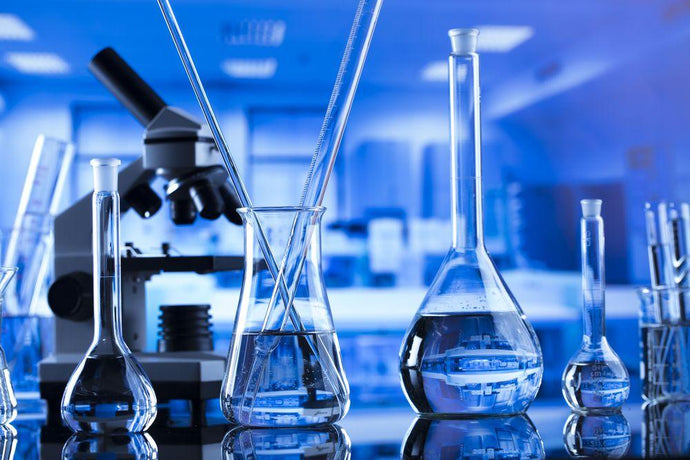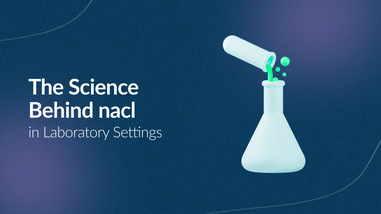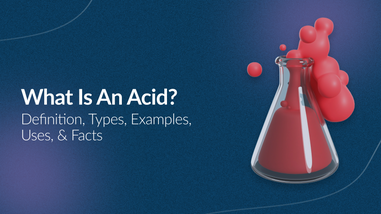- No products in the cart.
For laboratories that routinely perform redox reactions for research or electronics assembly, having a library of oxidizing agents and understanding their comparative strengths is critical. Even among technical and scientific professionals, most people without a background in chemistry may not understand what oxidizing agents are or how they work, however. This is problematic, as in many laboratories technicians will be expected to know which oxidizing agent to choose for a particular task—and the consequences of making the wrong choice may be disastrous.
Before discussing which oxidizing agent is the right tool for different types of laboratory tasks, it’s essential to explore how the strength of oxidizing agents is measured and to understand what defines an oxidizing agent as being well-suited for a given job.
What Is The Standard Reduction Potential Of An Oxidizing Agent, And Why Does It Matter?
A brief lesson in analytical chemistry will provide a strong foundation for practical use of oxidizing agents. When a chemical receives electrons, it is referred to as being “reduced”; when it donates electrons, it is referred to as being “oxidized.” In the context of a chemical solution, adding an oxidizing agent is equivalent to adding atoms which can receive electrons from other atoms in the solution, thereby causing the other atoms in the solution to donate their electrons and become oxidized. While this terminology is somewhat counterintuitive, learning a bit more about how to measure oxidation and reduction will provide substantial clarification. The standard reduction potential (E h ) of a chemical describes the ease with which the chemical can receive or donate electrons from an adjacent electrode rather than from another atom of a chemical in a solution. Chemicals with higher standard reduction potential values are better oxidizing agents because they can accept more donated electrons, thereby oxidizing a greater proportion of the potential electrons eligible for donation. The standard reduction potential is measured in volts because it reflects the flow of electrons from the electrode to a chemical.
However, astute chemists will note that the ease of electron flow is impacted by a handful of factors, including:
-
Temperature
-
Purity of the participating atoms
-
Ionic concentrations
-
Partial pressure
Thus, the “standard” component of the standard reduction potential refers to the conditions under which the reduction potential is the same as the volt value listed for a particular chemical.
These conditions are:
-
25 degrees centigrade
-
100% purity of the participating atoms
-
1 molar concentration of the participating ions
-
1 atmosphere of partial pressure for the participating gaseous atoms
To standardize the metric, a consistent hydrogen electrode defined with a potential of zero volts is also used as a reference point. In real-world practice, the most important takeaway is that elements with higher standard reduction potentials will be more effective oxidizing agents. With this metric in mind, it’s possible to compare the relative power of oxidizing agents to find the best one for any given application.
Which Oxidizing Agents Are The Strongest, And Which Are The Weakest?
Each of the most common oxidizing agents has a specific use case. The liquid or gas phase of the agent, its corrosive properties, and its risk of causing harm to humans or other lab hardware are each relevant factors to consider. As a rule, most oxidizing agents are dangerous to human life and can cause damage to the surrounding area if not properly contained. However, with the appropriate precautions, most oxidizing agents can be used safely in at least one of their phases of matter.
Sulfuric acid (H2SO4) is an oxidizing agent of modest strength, with a standard reduction potential of 0.17 volts. Because sulfuric acid is by definition in its aqueous form, it is well-suited for situations in which there is residue built up on the surface of the electrode being oxidized which must be removed and washed away.
However, as an oxidizing agent, sulfuric acid may not necessarily capture enough electrons to extinguish free electrons in highly reduced electrodes or solutions. Furthermore, sulfuric acid is not suitable for use with electrodes or chemical solutions composed of easily-corroded elements like silver or gold.
Hydrogen peroxide (H2O2) has an oxidizing potential of 0.70 volts in its aqueous form. Unlike sulfuric acid, hydrogen peroxide is a stronger oxidizing agent. It’s also significantly safer to use because it isn’t a strong acid. This means that it is also preferable for oxidizing electrodes made from easily tarnished or corroded elements. For most laboratory purposes, hydrogen peroxide is the ideal oxidizing agent because it is strong enough to accomplish the task of oxidizing the target solution or electrode while being inexpensive to purchase and easy and safe to work with.
There may be some situations in which an aqueous oxidizing agent is undesirable or difficult to remove after the oxidation process, however. Furthermore, there may be situations in which hydrogen peroxide is not powerful enough to fully oxidize the target.
Ozone (O3) is a powerful oxidizing agent in its gaseous state, boasting an oxidizing potential of 2.075 volts. Ozone is highly dangerous to humans, and it’s also difficult to work with because of its propensity to explode when exposed to temperatures outside of a narrow range. When used with the correct precautions, ozone is the go-to choice for industrial applications requiring an extremely powerful and gas-phase oxidizing agent. But, ozone is very expensive to purchase and requires fastidious caution to use or to store, making it poorly-suited for tasks which could be accomplished with another oxidizing agent.
Fluorine (F2) is one of the most powerful and most versatile oxidizing agents, with an oxidizing potential of 3.05 volts in its aqueous form, hydrofluoric acid, and an oxidizing potential of 2.87 volts in its gaseous form. For applications requiring the very strongest of oxidizing agents in either the liquid or the gas phase, fluorine is the only choice. Fluorine is extremely reactive, however, making it very difficult to work with regardless of its phase or the target’s composition.
Many atoms and molecules react explosively with fluorine with minimal provocation, including ubiquitous molecules like carbon dioxide. Common elements in organic molecules like carbon, nitrogen, and ammonia will also react explosively under a broad array of molecular conditions. Thus, it’s wise to avoid using fluorine as an oxidizing agent if there is anything else which might be able to do the job.
Picking The Right Oxidizing Agent For The Job
While the above list of oxidizing agents is only a small subset of the massive number of commercially available chemicals which can fulfill similar roles, many laboratories may still struggle to choose the appropriate oxidizing agent for their needs, especially when their needs are non-traditional. Thus, working with an experienced supplier of oxidizing agents and other laboratory chemicals can go a long way towards finding the right chemical tools for a laboratory’s intended applications. When labs work with a qualified supplier who is familiar with their industrial or their research needs, keeping the engine of innovation humming is easier than ever before.
For over 40 years, Lab Pro has been committed to providing oxidizing agents in California. Come visit the biggest Lab Supply showroom in California, or contact us online or at 888-452-2776.












































